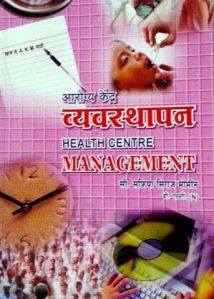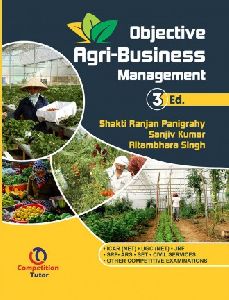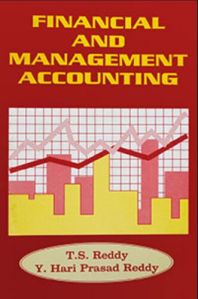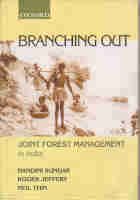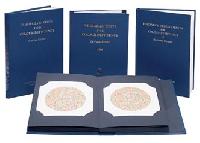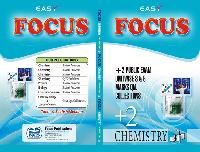Listing ID #5033189
Company Information
Ask for more detail from the seller
Contact SupplierBook Description:
Rainwater Management: Theory and Practice is a comprehensive treatise on water management based on water harvesting techniques for management of storage water for irrigation purpose & irrigation water management. This book, primarily designed to cater to the needs of undergraduate and postgraduate students of agricultural engineering, agricultural and soil & water engineering, research scholars, professionals and policy planners associated with rainwater management, dryland farming and irrigation water management. It covers major topics on water harvesting and design of water harvesting structures and recycling of harvested rainwater aspects. Entire content has been divided into the 22 chapters with solved examples and case studies.
A sincere attempt has been made to compile and present the text in quickly understandable term, well drawn diagrams, understanding the rainwater management and livelihood security aspects of dryland and irrigated farmers. This book could be a text book for undergraduate and postgraduate students, a reference tool for professional and good teaching material for teachers in the field of rainwater management and irrigation management under dryland ecosystem and also for the scientists working in the field of rainwater and Irrigation water management
Authors Details:
Dr. M.L. Jat
Dr. M.L. Jat was born into an agriculture family on January 1st, 1958 in Bhilwara district of Rajasthan state, India. Graduating from CTAE, Sukhadia University, Udaipur, Rajasthan. He Obtained M.E. (Ag.) in Irrigation Water Management from RAU, Bikaner. Presently Dr. Jat is working as Associate Professor (SWE) in AICRP on Dryland Agriculture at DFRS, Arjia, Bhilwara, MPUAT, Udaipur (Rajasthan). The author has vast experience in the field of prediction of drought and its management, ground water also in rainwater management while working in AICRP on dryland agriculture and agrometeorology. He has received Outstanding Book Awards in 2008 from Indian Society of Agricultural Engineers for his book on “Groundwater Hydrology”.
Dr. O.P. Gill
Dr. Om Prakash Gill, obtained his Ph.D. from RAU, Bikaner in 1992. He took over the additional charge as the Vice-Chancellor, MPUAT, Udaipur 2012 to 2015. He has 38 years experience in teaching, research, extension, administration and shouldered many additional responsibilities. He has contributed significantly in specialized areas like Integrated Farming System; Agromet Advisory Services; Climate Change; Organic Farming; Micro Irrigation and Management. The technologies developed by him to achieve sustainable increase in productivity and minimization of pre and post harvest losses due to pests and weeds cover crops like groundnut, onion, radish, isabgol, pearl miller, wheat, mustard, chickpea, etc. He has published 42 research papers in different international and national journals, more than 300 popular articles in different periodicals and publications, three edited books and delivered more than 120 radio and TV talks.
Dr. B.S. Deora
Dr. B.S. Deora, obtained his Ph.D. (SWC Engg.) MPUAT, Udaipur presently working, Professor at Centre for Natural Resources Management, S.D. Agricultural University, S.K. Nagar, Gujarat(India). He for the last 32 years is actively involved in teaching, research & development, extension and techno-administration. He gave 9 scientific recommendations, published 86 international/national publications/articles and reports; 5 book chapters, 2 books delivered 10 T.V. and 4 Radio programmes to his credit. He also has been a member of the Governing Board, the Academic Councils, various selections committees and panel of examiners of several organizations/universities; and Chairman/Member of more than 140 scientific/administrative committees.
Dr. Vivek Kumar
Dr. Vivek Kumar working as Microbiologist, Microbiology Section, Department of Soil and Water Research, Public Authority of Agricultural Affairs & Fish Resources, State of Kuwait. He has obtained his master's and doctoral degrees in Microbiology from CCS Haryana Agricultural University, Hisar, India. He has been recipient of "Young Scientist Award" in Agricultural Microbiology, awarded by Association of Microbiologists of India. He has presented his research findings in several national conferences and visited Germany twice to present his research papers in international conferences. Dr. Kumar has published 40 research papers in the journal of international repute, two review articles, contributed chapters in four books, and articles on transfer of technology and guided number of research students in their M.Sc. dissertation. He has more than 14 years of experience and currently involved in the capacity building of Kuwaiti Nationals in basic and applied microbiology by lectures/practical trainings and classes on agricultural and soil microbiology. His field of research is plant-microbe-interaction, biocontrol, bioremediation and environmental microbiology. He is reviewer of many International Biological Sciences journals and also Associate Editor of "International Journal of Biological and Chemical Sciences". In Kuwait, he has been credited along with his colleagues to report first time in world the “Pink Rot Inflorescence” disease of date palm caused by Serratia marcescens.
Table Content:
1. Introduction
1.1 Introduction
1.2 Water resources
1.3 Need for rainwater management
1.4 Managing Competing Demands
1.5 Basic Principles of Rainwater Management
1.6 National Water Policy
1.7 Guidelines for Management and Assessment
1.8 Assessment and Management of Environmental Impacts
1.9 National Commission for Integrated Water Source
Development Plan
Exercises
References
2. Precipitation
2.1 Introduction
2.2 Hydrological Cycle
2.3 Different Forms of Precipitation
2.4 Types of Precipitation
2.5 Monsoons
2.6 Measurement of Point Precipitation
2.7 Analysis of Precipitation
2.8 Precipitation Gauge Network
2.9 Precipitation Analysis and its Presentation
Exercises
References
3. Rainfall and Water Balance Analysis
3.1 Introduction
3.2 Different Types of Statistical Distributions
3.3 Return Period or Recurrence Interval
3.4 Testing the Goodness of the Fit of the Statistical Distribution
3.5 A Case Study
3.6 Markov Chain Model
3.7 Types of Markov Chains
3.8 Utility
3.9 To Fit the Markov Model and to Test the Goodness of Fit
3.10 Water Balance Analysis
Exercises
References
4. Drought Indices
4.1 Introduction
4.2 Definitions of Drought
4.3 Classification of Droughts
4.4 Difference between Aridity and Drought
4.5 Climate Change and Drought
4.6 Reasons of Drought
4.7 Drought Indices
4.8 Drought Indices in India
4.9 Suitability of Drought Indices for Different Regions
4.10 Drought Monitoring Indices
4.11 Declaration of Drought by State Government
4.12 Prediction of Drought
4.13 Drought Management Strategies
Exercises
References
5. Climate, Weather Forecasting and Agro-advisory Services
5.1 Introduction
5.2 Classification of Atmosphere
5.3 Meteorological Elements and Hours of Observation
5.4 Classification of Surface Observatories
5.5 Weather Abnormalities
5.6 Weather Forecasting
5.7 Indigenous Techniques of Weather Forecasting
5.8 Weather Forecasting Organisations
5.9 Weather Elements and Time Factor
5.10 Modern Weather Prediction
5.11 Preparation of a Weather Outlook for the Farmers
5.12 Agroadvisory Services
5.13 Operational Forecasts
5.14 Methods of Weather Forecasting
5.15 Weather Modification
Exercises
References
6. In-situ Rainwater Management
6.1 Introduction
6.2 Factors affecting rainwater management
6.3 Some Definitions
6.4 Raindrop Characteristics
6.5 Basic Principles for In-situ Rainwater Management
6.6 Building In-situ Soil Moisture
6.7 Agronomic measures
Exercises
References
7. Ex-situ Rainwater Management
7.1 Introduction
7.2 Need of Water Harvesting
7.3 State Sponsored People’s Cooperatives
7.4 Principle of Ex-situ Rainwater Management
7.5 Water Harvesting
7.6 Increasing Productivity of Stored Water - A Case Study
7.7 Water Harvesting and Recycling
7.8 Design of Water Harvesting System
Exercises
References
8. Water Harvesting-cum-Artificial Groundwater Recharge
8.1 Introduction
8.2 Traditional Rainwater Harvesting Systems
8.3 Classification of Water Harvesting Techniques
8.4 Water Harvesting Techniques in Arid and Semi-arid Areas
8.5 Traditional Water Harvesting Systems
8.6 Artificial Recharge Techniques
8.7 Increased Runoff
8.8 Conservation Strategies
Exercises
References
9. Design of Water Harvesting Structures
9.1 Introduction
9.2 Rainwater Harvesting Structures
9.3 Estimation of Groundwater Recharge
Exercises
References
10. Water Losses and Control
10.1 Introduction
10.2 Different Forms of Water Losses
10.3 Interception Loss
10.4 Evaporation
10.5 Transpiration
10.6 Evapotranspiration
10.7 Depression Storage
10.8 Watershed Leakage
10.9 Infiltration
Exercises
References
11. Efficient Crop Planning
11.1 Introduction
11.2 Crop Planning
11.3 Drought Management Strategies
11.4 Crop Planning under Aberrant Weather Situations
11.5 Crop Planning Based on Onset of Monsoon
Exercises
References
12. Water Lifting Devices
12.1 Introduction
12.2 Human Power Operated
12.3 Animal Power Operated
12.4 Mechanical Power Operated
12.5 The Hydraulic Ram
Exercises
References
13. Measurement of Irrigation Water & Conveyance
Structures
13.1 Introduction
13.2 Units of Measurement
13.3 Techniques of Water Measurement
13.4 Farm Irrigation Distribution System
13.5 Erosion Controlling Structures in Channel
13.6 Water Control and Diversion Structures
13.7 Channel Crossing Structures
13.8 Underground Pipeline System
Exercises
References
14. Soil Plant Water
14.1 Introduction
14.2 Soils
14.3 Root Zone Soil-water
14.4 Soil Water Retention
14.5 Dynamics of Field-water
14.6 Plant-water Relationships
14.7 Water Movement in Soil-Plant-Atmosphere System
Exercises
References
15. Water Requirement Estimation for Crops
15.1 Introduction
15.2 Important Definitions
15.3 Direct Measurement of Evapotranspiration
15.4 Estimating Evapotranspiration from Evaporation Data
15.5 Estimating Evaportanspiration from Climatological Data
Exercises
References
16. Irrigation Scheduling
16.1 Introduction
16.2 Water Needs of Crop
16.3 Determination of Critical Periods of Water Need
16.4 Criteria for Irrigation Scheduling
16.5 Combination Approach
16.6 Frequency and Interval of Irrigation
Exercises
References
17. Planning Operation of Water Recycling System
17.1 Introduction
17.2 Need for Planning of Operation
17.3 Causes of Poor Operation of Water Recycling System
17.4 Important Terminology Pertaining to Community or Large Water Harvesting System
17.5 Dynamics of Water Harvesting Structures
17.6 Main Objectives of Operation and Criteria of Good Performance
17.7 Planning Operation of Recycling System
17.8 Measures to Match Supply and Demand
17.9 Water Delivery System
17.10 Monitoring the Operation
17.11 Maintenance
17.12 Assessment of Water Charges
17.13 Canal Outlets
17.14 Scheduling of Delivery
17.15 Farmer's Participation
Exercises
References
18. Water Recycling
18.1 Introduction
18.2 Effects of Life Saving Irrigation
18.3 Methods of Irrigation
18.4. Miroirrigation
18.5 Some Emerging Concepts and Innovations
18.6 Qualities of Irrigation Water
18.7 Multiple uses of harvested rainwater
Exercises
References
19. Recycling of Industrial Effluents
19.1 Introduction
19.2 Historic Perspective
19.3 Need for reuse of Industrial Effluents
19.4 Environmental Impacts of Industrial Uses of Water
19.5 Characteristics of Different Industrial Effluents
19.6 Effluent Utilization
19.7 Remediation techniques
19.7 Planning for Reuse of Wastewater
19.8 Measures for Conservation in Industries
19.9 Strategies for Conservation
19.10 Strategies for Recycling Industrial Effluents in
Agriculture
Exercises
References
20. Water Recycling in Salty Lands
20.1 Introduction
20.2 Salt Affected Soils
20.3 Classification of Salt Affected Soils
20.4 Quality of Irrigation Waters
20.5 Reclamation of Salt Affected Soils
Exercises
References
21. Drainage of Agricultural Lands
21.1 Introduction
21.2 Reasons of Waterlogging
21.3 Drainage System
21.4 Subsurface Drainage System
Exercises
References
22. Watershed Management
22.1 Introduction
22.2 Causes of Watershed Deterioration
22.3 Concepts of Watershed
22.4 Watershed Characteristics
22.5 Objectives of Watershed Management
22.6 Principles of Watershed Management
22.7 Monitoring and Evaluation
22.8 Indicators for Evaluation
22.9 A Case Study
Exercises
References
Appendices
Subject Index



